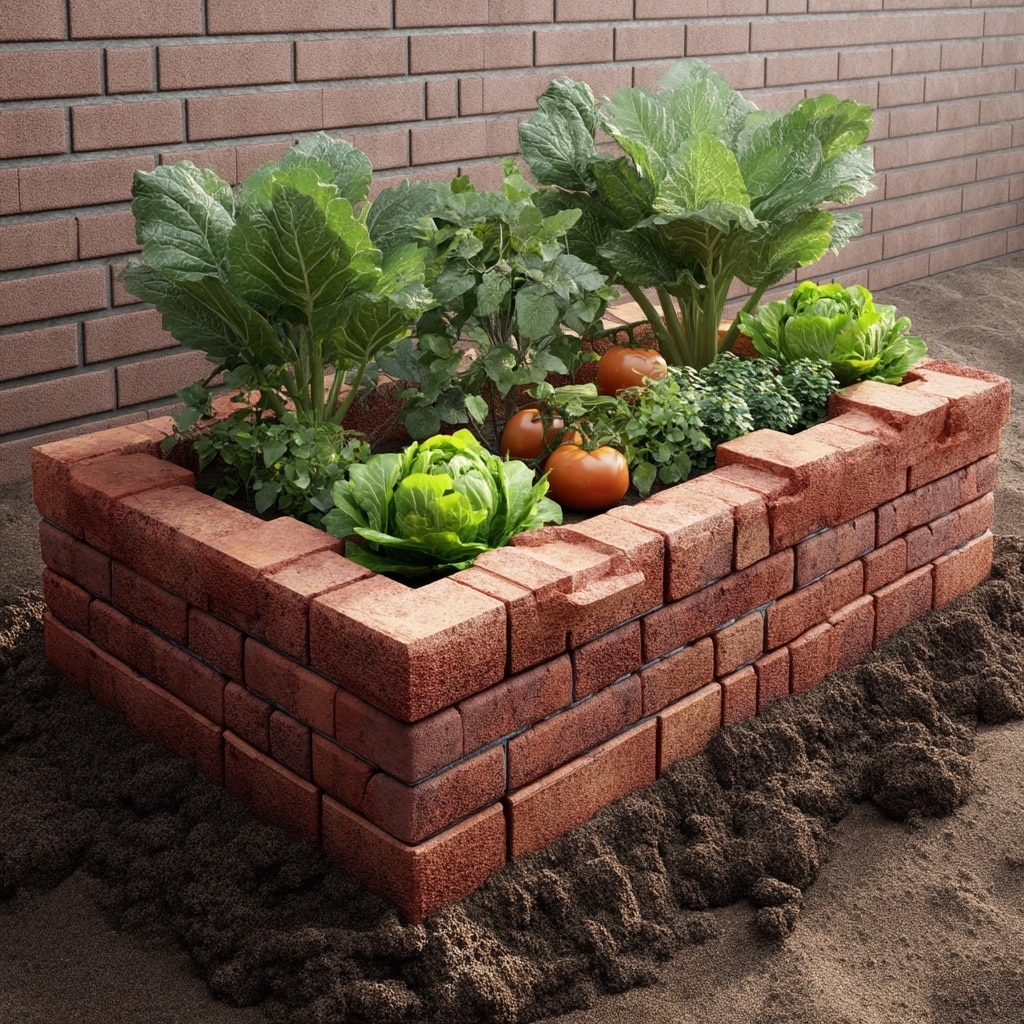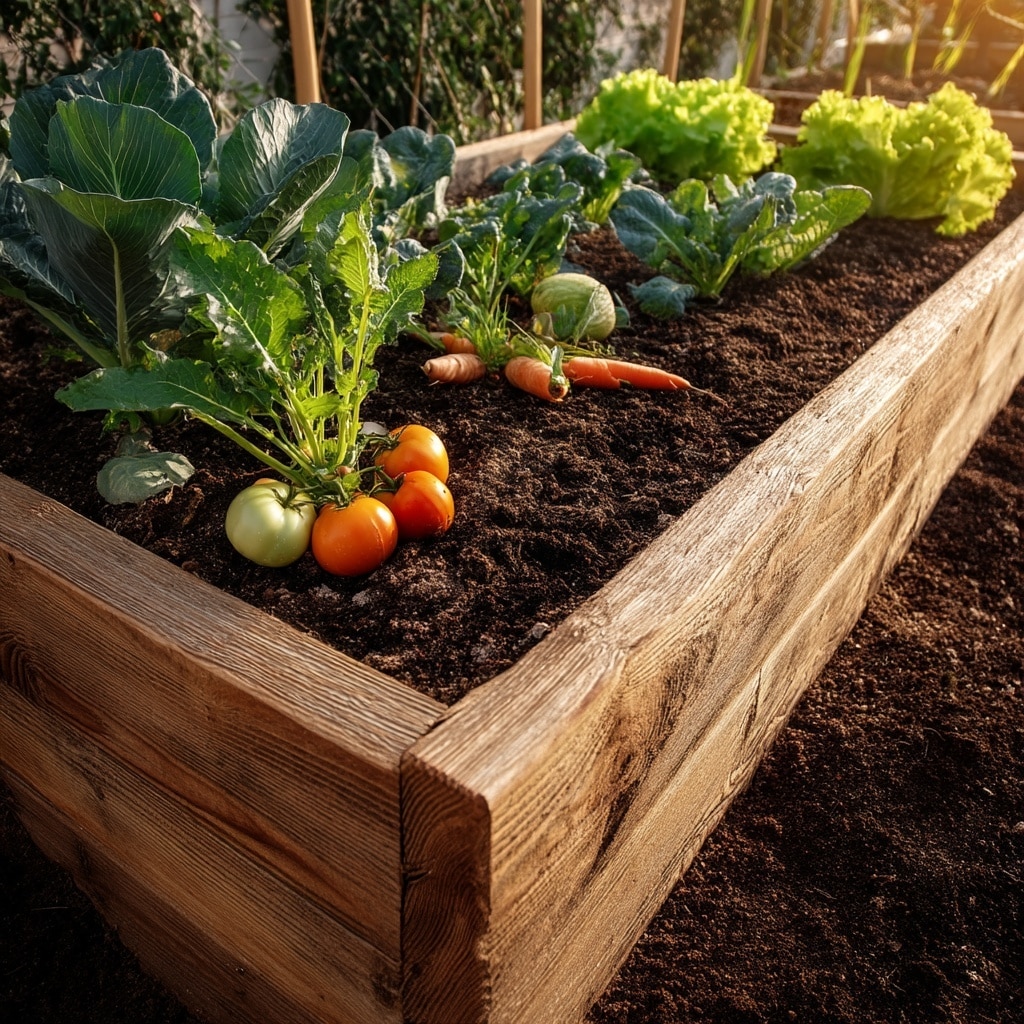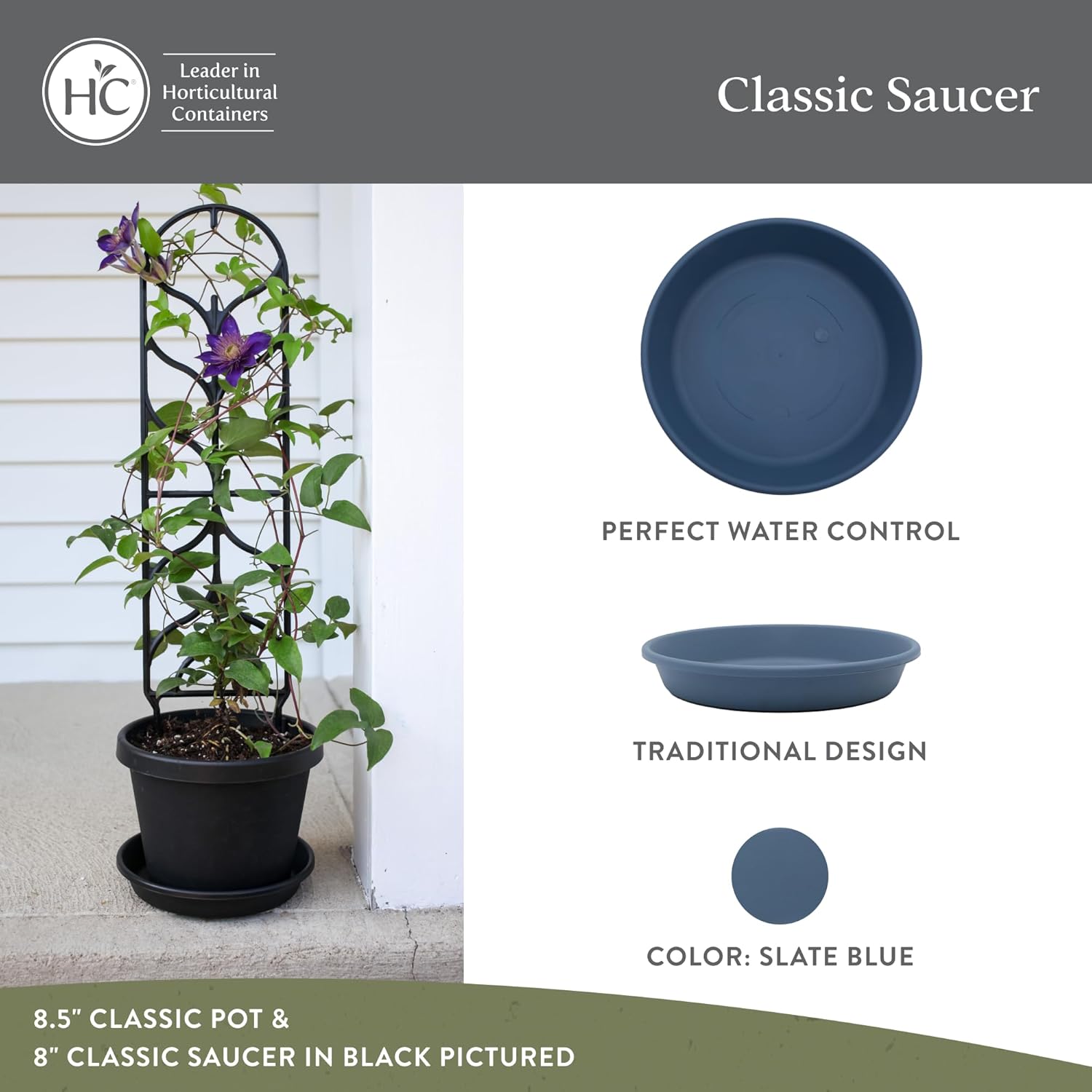Raised garden bed ideas can completely transform how you grow vegetables, herbs, and flowers—especially if you’re tired of battling poor soil or awkward garden layouts. Whether you’re working with a small backyard, a sunny patio, or even a balcony, raised beds offer better drainage, improved soil quality, and easier maintenance. For new gardeners or seasoned growers alike, building your own raised beds gives you control over the look, size, and materials while keeping costs in check. In this guide, we’ll share some of the most practical, creative, and budget-friendly DIY raised garden bed ideas to inspire your next project—and help you grow healthier plants with less stress.
Table of Contents
Cedar Raised Garden Beds
Cedar is one of the most popular materials when it comes to raised garden bed ideas—and for good reason. It’s naturally resistant to rot, repels pests, and can last for years without the need for chemical treatment. If you’re building your first raised bed and want something that blends beauty with durability, cedar is a solid choice.
One of the big advantages of using cedar is that you can find it in most hardware stores, and it’s fairly easy to work with—even if you’re not especially handy with tools. Many beginner gardeners choose pre-cut cedar boards and assemble their beds using simple hardware like framing angles or corner brackets, often needing nothing more than a drill and a wrench.
While cedar prices have gone up in recent years, you can still build a basic 4’ x 4’ x 1’ bed for just over $100, depending on your area. To make sure your investment lasts, go for the thickest boards your budget allows—aim for at least 2 inches thick. Thinner boards may be tempting but often warp or rot faster, meaning you’ll be rebuilding sooner than expected.
And here’s a pro tip: avoid pressure-treated wood, which can leach harmful chemicals into your garden soil. If you want to add color or protection, choose a non-toxic, weatherproof stain that’s safe for edible plants.
Cedar beds also offer design flexibility. Whether you want a traditional square bed or a longer 2’ x 8’ version to maximize growing space, you can customize your layout to fit your garden space perfectly.
Easy Raised Bed Boxes with Corner Brackets
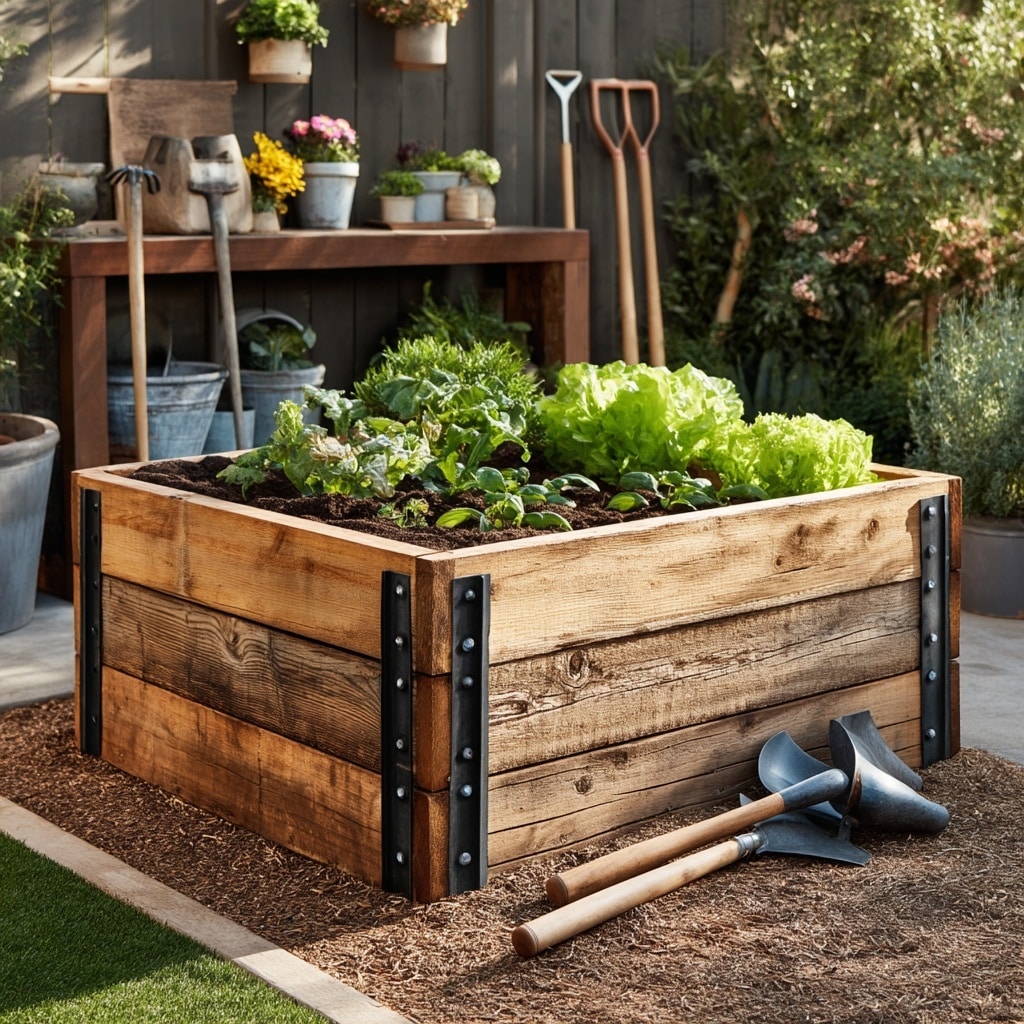
If you love the look of wooden raised beds but feel overwhelmed by the building process, there’s good news—raised bed corner brackets can take the stress out of assembly. These pre-made brackets are designed to hold your wooden boards in place with minimal tools or measuring. It’s one of the simplest raised garden bed ideas for beginners.
To get started, all you need are four corner brackets and lumber cut to your desired bed size—many hardware stores will even cut boards for you. Most brackets are designed to fit standard 2-inch thick boards, which are perfect for creating sturdy, long-lasting beds.
Powder-coated aluminum brackets are a top choice because they resist rust and weather damage. Some even include stacking extenders so you can easily build taller beds without buying longer boards. It’s a flexible solution for gardeners who want to add more depth without redoing the entire structure.
You can also find sleek corner sets with decorative caps that give your raised beds a polished, finished look. These small touches not only add style but help reinforce the corners for a longer-lasting build.
For a fast and affordable garden upgrade, corner brackets are hard to beat. They allow you to build raised garden beds in just minutes—and without needing a full toolbox or carpentry skills.
Galvanized Tubs and Cattle Trough Raised Beds

When exploring creative raised garden bed ideas, galvanized tubs and cattle troughs (also called stock tanks) stand out as both stylish and surprisingly practical. These metal containers are sturdy, long-lasting, and often the perfect height for growing leafy greens, herbs, or shallow-rooted vegetables.
One of the biggest perks? No building required. Just place them where you want, drill a few drainage holes in the bottom, and fill them with quality soil. It’s an instant raised bed with built-in durability. The metal sides also help warm up the soil earlier in the spring and retain heat later into the fall—great for extending your growing season.
For extra functionality, you can add casters or wheels to the bottom of your stock tank, allowing you to move it around your patio or garden space. This is especially helpful for renters or urban gardeners with limited space and shifting sunlight.
Worried about safety? Most new stock tanks are made from food-safe galvanized steel, but always double-check before purchasing. Make sure the container hasn’t been treated with harmful coatings or used for anything toxic in its previous life if you’re repurposing an old one.
This method brings a bit of farmhouse charm to your garden while keeping things low-maintenance. And with a little customization—like adding wood trim or painting the outside—you can turn a basic trough into a backyard showpiece.
Corrugated Metal & Hybrid Raised Beds
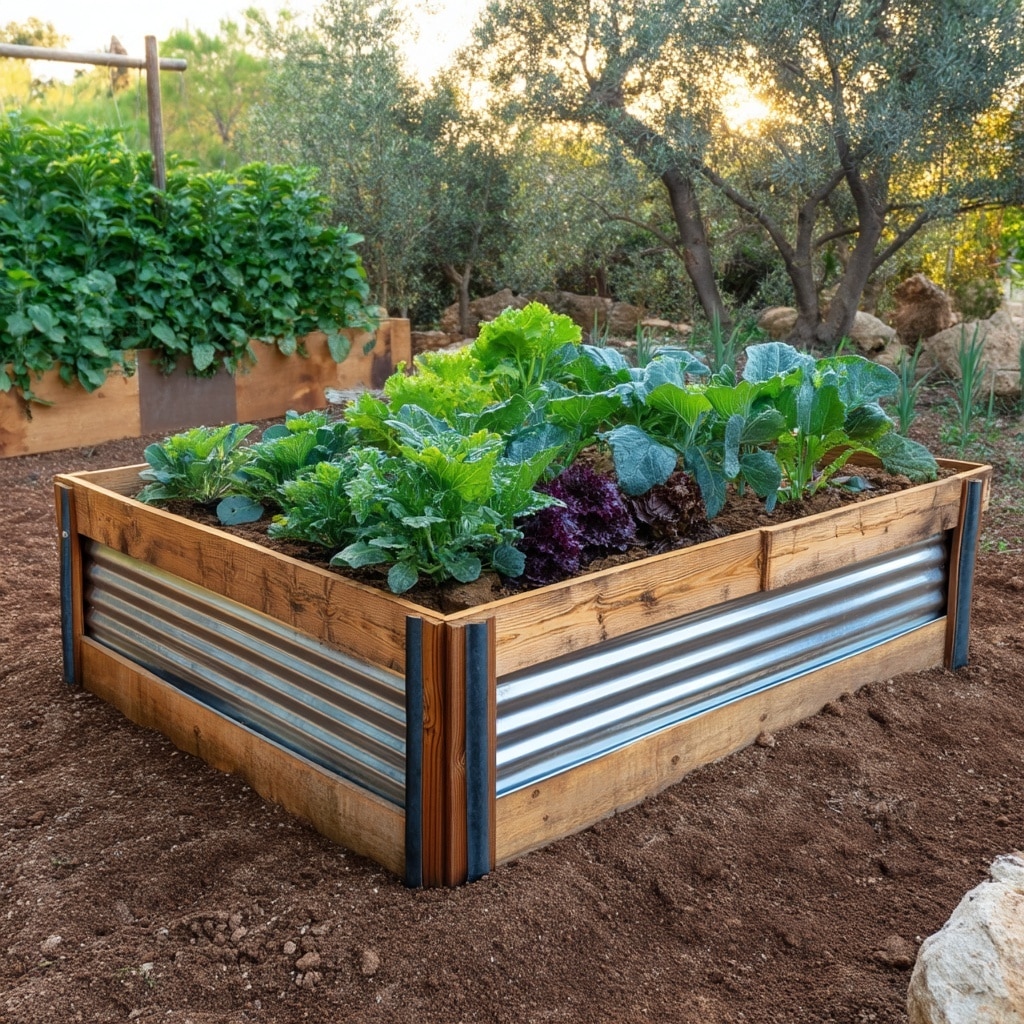
If you’re looking for raised garden bed ideas that balance aesthetics, durability, and budget, corrugated metal beds framed with wood might be your perfect match. This hybrid style has become increasingly popular thanks to rising lumber prices and the rustic-meets-modern look it offers.
Corrugated roofing panels are widely available, relatively affordable, and surprisingly strong when supported correctly. Since the panels alone can’t hold back the weight of soil, they’re typically secured inside a wooden frame. This gives the structure both strength and style while reducing the overall amount of lumber needed.
Some gardeners add top trim to the wooden frame to create a more finished look and provide a comfortable edge for leaning or sitting while working. It’s also common to bury corner posts slightly in the ground for extra support, which helps prevent the panels from bowing outward.
If you’re aiming for a wood-free setup, consider pre-fabricated cold-rolled galvanized steel beds. These come in flat panels and assemble easily using bolts and washers. Many brands use food-safe coatings to ensure they’re safe for growing edibles, and their sleek design can elevate the look of any space.
This hybrid approach is perfect for gardeners who love DIY projects but want to cut material costs without cutting corners. Whether you go with metal framed by cedar or a clean steel-only option, corrugated metal raised beds offer both visual appeal and long-term performance.
Cinder Block or Brick Raised Beds
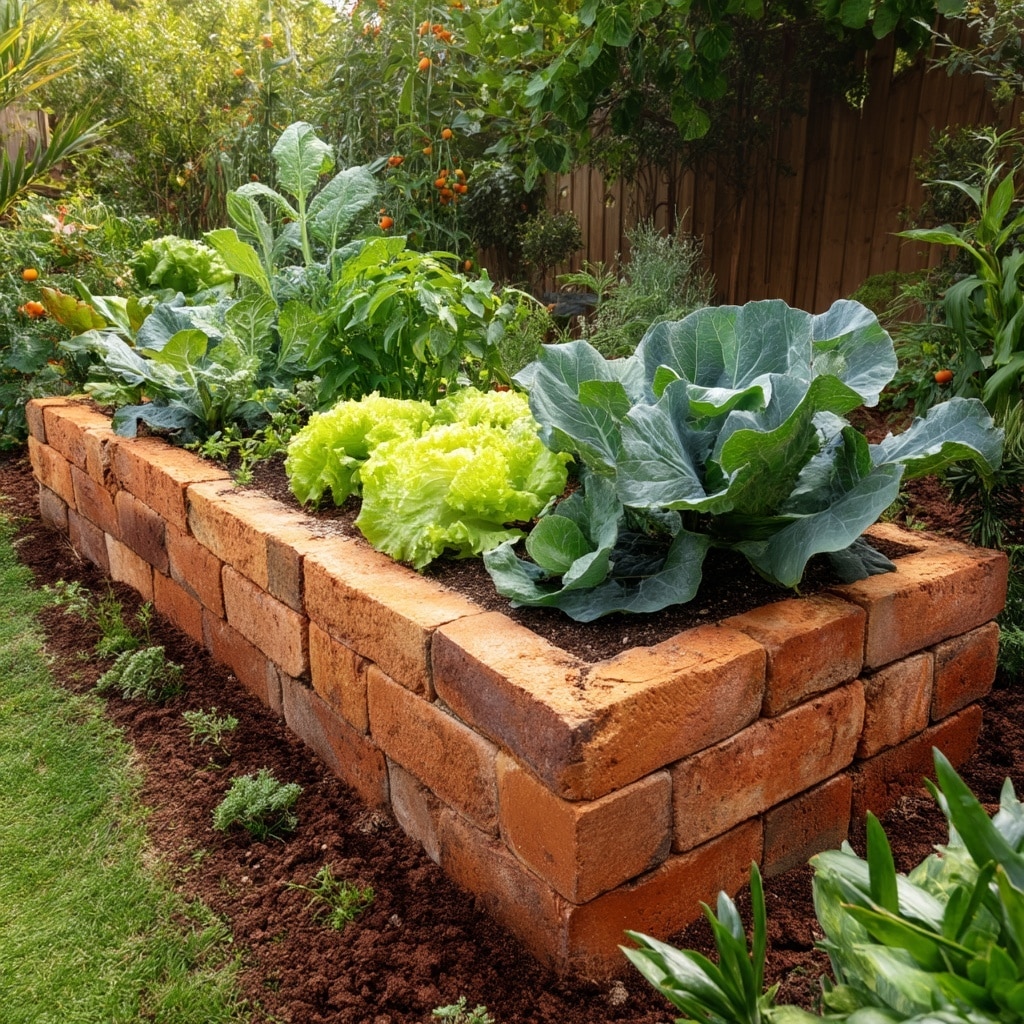
For a solid and long-lasting option, cinder block or brick beds offer one of the most durable raised garden bed ideas out there. These materials not only stand the test of time, but also give your garden a neat, structured look that blends beautifully with patios or hardscapes.
Cinder blocks are particularly beginner-friendly. They’re stackable, easy to find, and can be assembled without mortar for a quicker build. While they take up a bit more space due to their thickness, some gardeners even take advantage of the hollow block holes by planting herbs or flowers in them.
Bricks, on the other hand, create a more refined aesthetic—especially if you’re matching your garden design to an existing walkway or patio. Just be sure to choose new bricks or cinder blocks made from food-safe concrete. Avoid reclaimed materials unless you know their history; old bricks might contain harmful substances like creosote or lead-based paint.
For extra stability, you can use a sand-based mortar to lock the blocks or bricks in place, though it’s not always necessary. If you go this route, make sure to level your site thoroughly before stacking to prevent shifting over time.
While these beds may take more time and effort upfront, they’re virtually maintenance-free once in place. And if you live in a windy or flood-prone area, their weight offers a level of resilience that lighter materials just can’t match.
Other Creative DIY Raised Bed Ideas
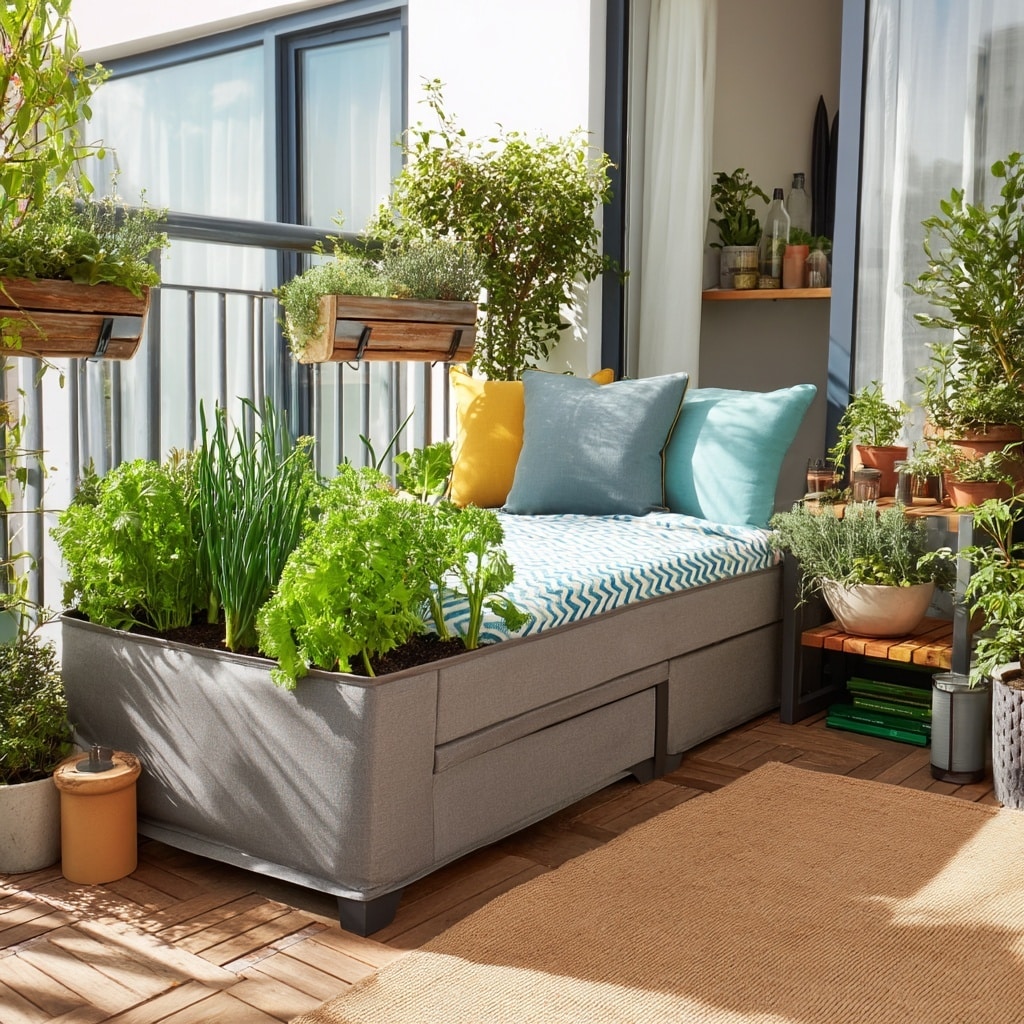
Sometimes, the best raised garden bed ideas are born from rethinking traditional designs. Whether you’re dealing with mobility challenges, limited space, or a tight budget, there are plenty of clever ways to build a garden bed that fits your needs—and looks good doing it.
Raised Beds with Legs
Raised beds on legs are a game-changer for gardeners who want to avoid bending or kneeling. Ideal for patios, decks, and balconies, these waist-height planters bring your garden closer—literally. They’re especially helpful for those with back pain or limited mobility, and they offer a practical way to deter pests like rabbits or ground-dwelling critters.
If you’re handy with tools, building one from cedar is doable, though it’s a bit more complex due to the added support needed for the soil’s weight. Not into building? You can find many affordable pre-made options online, often under $250.
Cheap & Moveable Raised Beds
Need something super budget-friendly or temporary? Consider grow bags or large planters placed on benches or plastic chairs. It might not win design awards, but it gets the job done—especially in small spaces like balconies or patios.
These “beds” are also incredibly mobile, letting you chase the sun or reconfigure your garden layout with ease. Plus, they’re a great way to test out raised bed gardening before committing to more permanent installations.
While these options may not have the same longevity or visual impact as wood or stone beds, they’re proof that you don’t need a big budget or yard to grow your own food.
Installation Tips for Raised Garden Beds
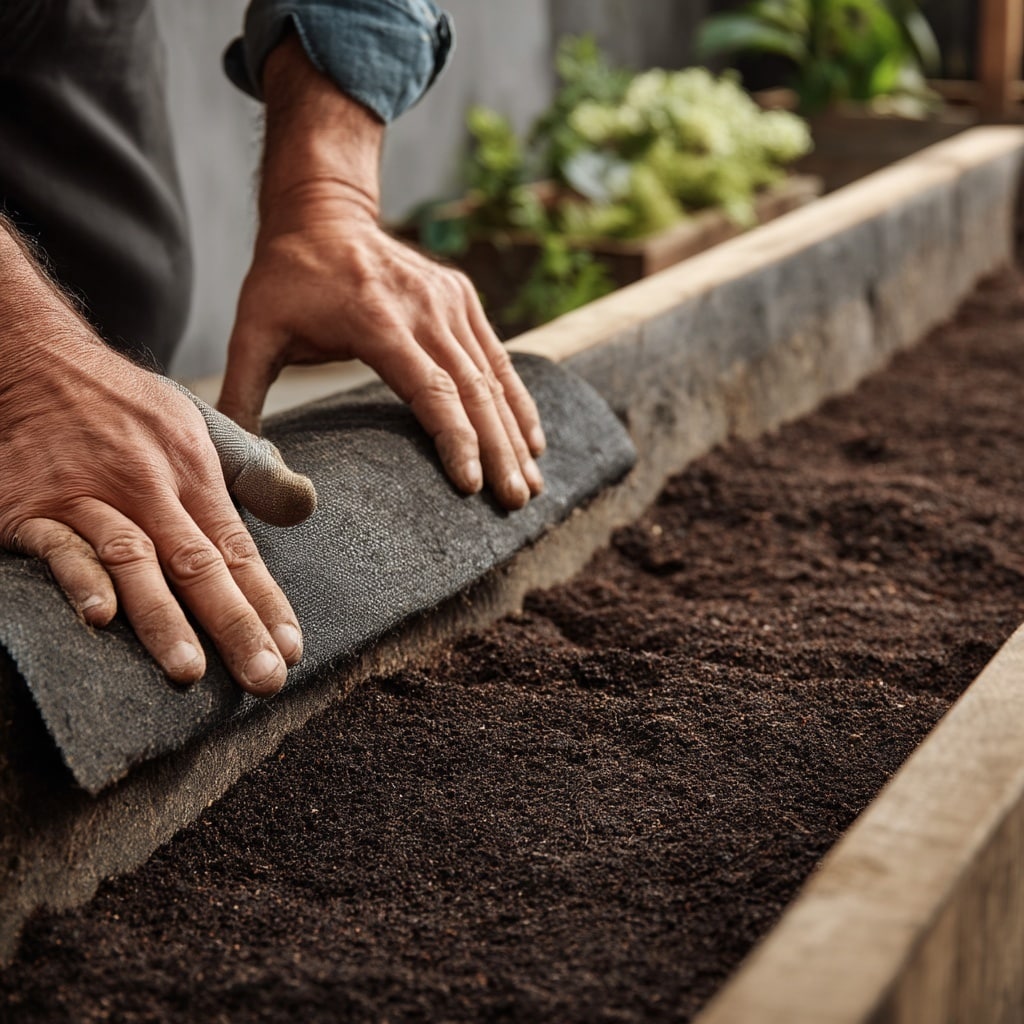
No matter how stylish or sturdy your design is, the success of your raised garden bed ideas often comes down to how well you install them. A little effort up front can make a big difference in how productive—and hassle-free—your garden will be.
1. Choose the Right Location
Sunlight is critical. Your raised bed should get at least 6–8 hours of direct sunlight per day, especially if you’re growing vegetables. Avoid shaded areas or spots with poor drainage. Flat, level ground is best—but if you’re working with a slope, you may need to do some digging or add paver sand to even things out.
2. Remove Sod and Level the Area
If you’re placing the bed over lawn, remove the sod first to prevent grass from growing up into your bed. Use a shovel or sod cutter, then level the area carefully. A level base ensures your bed won’t tilt, sag, or put stress on the structure over time.
3. Line the Bottom (if Open)
Open-bottom beds should be lined with weed barrier fabric to keep out grass and prevent soil erosion. If you’re dealing with burrowing pests like voles or moles, add hardware cloth underneath to protect your crops from below.
4. Add Drainage (if Closed-Bottom)
Using a container-style bed with a solid bottom? Drill drainage holes to ensure water doesn’t pool at the bottom—soggy roots are a fast track to plant failure.
5. Use High-Quality Soil
Raised beds give you a clean slate—so make the most of it. Fill your beds with nutrient-rich, organic soil, ideally a mix of topsoil, compost, and sand or perlite for drainage. Avoid peat-heavy mixes, and skip anything labeled “potting mix” unless it’s specifically designed for raised beds.
Want to know how much soil you’ll need? Use a soil calculator based on your bed’s dimensions (length × width × depth).
Conclusion
Choosing the right raised garden bed ideas for your space comes down to your goals, budget, and style. Whether you prefer classic cedar, rugged cattle troughs, or sleek corrugated steel, each option offers its own set of benefits. And remember: great gardens aren’t built in a day—but with a solid plan and smart materials, you’ll be harvesting your own herbs, greens, and veggies in no time.
So go ahead—pick a design, gather your tools, and get growing. Your dream raised bed garden is only a weekend away.

